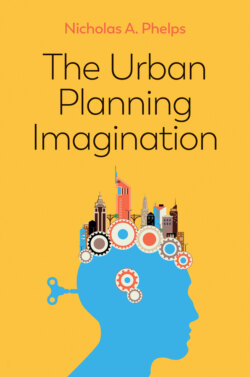Читать книгу The Urban Planning Imagination - Nicholas A. Phelps - Страница 24
Meso-level institutions of states
ОглавлениеThere is significant inertia in the built environment. The production of the built environment involves sunk costs in land and property which are imperfectly divisible or ‘lumpy’ commodities bought and sold in highly imperfect local markets. In addition, the development of cities is highly path dependent ‘because of the complex of rules, configurations, and relationships of property/infrastructure/governance that are established in urbanization processes’ (Sorensen, 2018: 42); because, that is, of the differently instituted planning systems and cultures of nations that ‘mediate competition over the use of land and property, to allocate rights of development, to regulate change and to promote preferred … urban form’ (ESPON, 2018: vii).
Sorensen (2018) develops a four-fold set of scenarios that highlight the evolution of the institutions that constitute national and sub-national planning systems and cultures. He identifies ‘displacement’, where the removal of existing rules and the creation of new ones are likely; ‘layering’ of new rules on top of existing ones; ‘conversion’ involving incremental change; and ‘drift’, or a failure to adapt policies to changed circumstances. Two of these processes – displacement and layering – have been apparent in the development of statutory planning systems and cultures.
The history of urban planning suggests that displacement has been something done across the global south as part of imperial expansion (Home, 2013), including the seizure of lands from indigenous populations and the imposition of norms of private property. In Australia (Jackson et al., 2017) and Canada (Blomley, 2014) these norms displaced ancient customary land-ownership relations and ‘urban’ planning as land management. Displacement has resulted from major political-ideological shifts such as the ‘big bang’ liberalization of land and property markets experienced in some East and Central European countries after the collapse of the Soviet bloc.
Statutory planning in many global north nations might be characterized by a layering of practices and responsibilities, as it has become a generally larger and better-resourced activity that has an expanding, complex range of responsibilities which require correspondingly elaborate divisions of labour. The simple world of the generalist urban planner, as he or she would have been trained at the end of the 1960s in the global north, has become more complex with the need to adjudicate on a range of complex technical evidence, specific new legislative and policy requirements and health and well-being aspirations.
Urban planning thus emerges as a matrix of institutions (Sorensen, 2018) underlining the centrality of urban planning to modern societies. Planning’s institutions are beholden to economic structures and political forces and adapt chameleon-like to them. As such, ‘planning and urban governance present an exceptionally dense and consequential set of institutions that is increasingly important for managing and regulating processes of urban change and capital investment in cities’ (Sorensen, 2018: 42). The institutions of urban planning are a product of past actions (Salet, 2018) which provide a store of wisdom, and while the copying of prior responses has advantages (Hoch, 2019: 99), it may also prove a dead hand on the development of the urban planning imagination. When we view them in geohistorical context, we see both contrasts and commonalities in the evolution of these meso-institutions that are the statutory urban planning systems and cultures I discuss in chapters 6 and 7.
